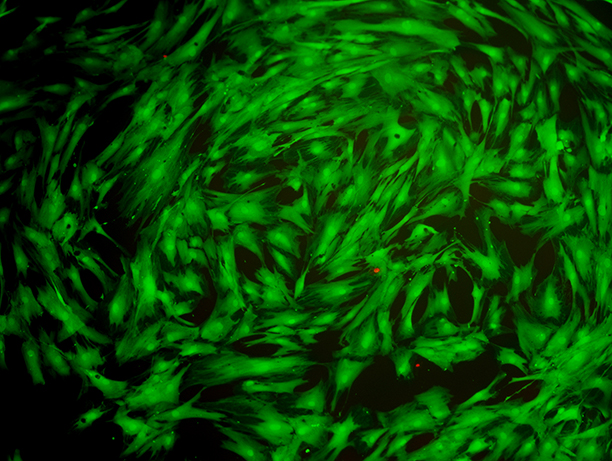pH-activated delivery of growth factors from keratin-PEG gels for bone tissue engineering
-
1
Hofstra University, Department of Engineering, United States
Polyethylene glycol (PEG) and keratin (KTN) proteins are hydrophilic biocompatible materials. Gels and scaffolds produced by crosslinking of KTN to PEG (KTN-PEG) have great potential applications as degradable temporary matrices for bone regeneration research. KTN-PEG hydrogels were fabricated by photopolymerization reaction of thiols and acrylates. These constructs were found to be stable but slowly-degradable due to protein hydrolysis. Test globular proteins (Alb = albumin, Hem = hemoglobin, Lys = lysozyme) with different isoelectric points (pIs) were absorbed and their release kinetics assessed. In physiological pH 7.4, the loaded protein release rates were charge-dependent with rate profiles being: Alb > Hem > Lys (Fig. 1).

However in acidic pH 4 where all proteins carry positive net charges, the release rates were determined to be size-dependent: Lys (14-kDa) > Hem (64-kDa) > Alb (66-kDa), suggesting that proteins with basic pIs like most growth factors (GFs) can be burst released in acidic pH. GFs: bone morphogenetic protein-2 (BMP-2; pI = 9) and chondromodulin-1 (Chm-1; pI = 7.5) were absorbed into the KTN-PEG bulk, washed with culture media at pH 7.4 and 4, and human adipose tissue-derived mesenchymal stem cells (hMSCs) cultured and induced using osteogenic differentiation medium. Cultured hMSCs attached and proliferated (Fig. 2) onto the KTN-PEG substrates. Osteogenic differentiation on gels with BMP-2 and Chm-1 produced more Alizarin Red S staining indicative of faster calcification and better hMSCs osteogenesis compared to groups without GFs. Gels activated in acidic pH to release the ionically-bound GFs had trends suggesting improved differentiation. This study demonstrated that GFs absorbed into the material can be efficiently freed via electrostatic repulsion in the acidic environment, which can potentially lead to recruitment, proliferation and differentiation of repair stem cells in an in vivo bone-defect model.

Keywords:
Cell Differentiation,
Hydrogel,
3D scaffold,
Polymeric material
Conference:
10th World Biomaterials Congress, Montréal, Canada, 17 May - 22 May, 2016.
Presentation Type:
Poster
Topic:
Biomaterials for therapeutic delivery
Citation:
De Guzman
R
(2016). pH-activated delivery of growth factors from keratin-PEG gels for bone tissue engineering.
Front. Bioeng. Biotechnol.
Conference Abstract:
10th World Biomaterials Congress.
doi: 10.3389/conf.FBIOE.2016.01.02235
Copyright:
The abstracts in this collection have not been subject to any Frontiers peer review or checks, and are not endorsed by Frontiers.
They are made available through the Frontiers publishing platform as a service to conference organizers and presenters.
The copyright in the individual abstracts is owned by the author of each abstract or his/her employer unless otherwise stated.
Each abstract, as well as the collection of abstracts, are published under a Creative Commons CC-BY 4.0 (attribution) licence (https://creativecommons.org/licenses/by/4.0/) and may thus be reproduced, translated, adapted and be the subject of derivative works provided the authors and Frontiers are attributed.
For Frontiers’ terms and conditions please see https://www.frontiersin.org/legal/terms-and-conditions.
Received:
27 Mar 2016;
Published Online:
30 Mar 2016.